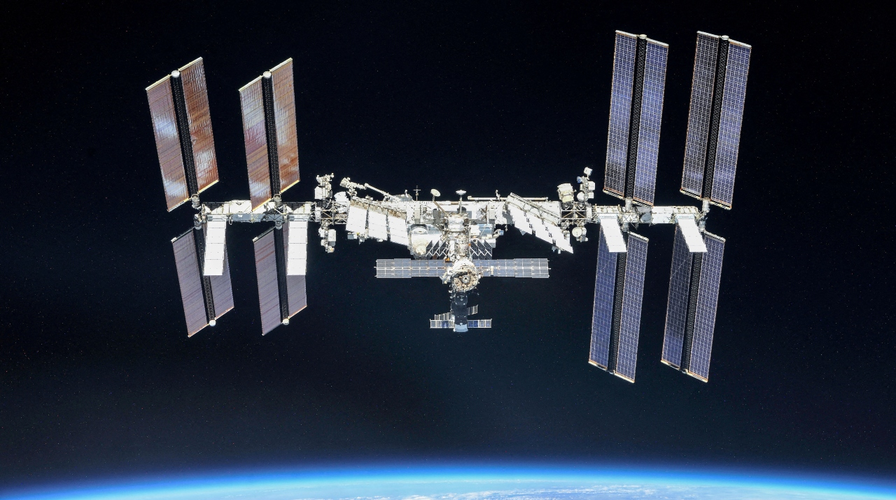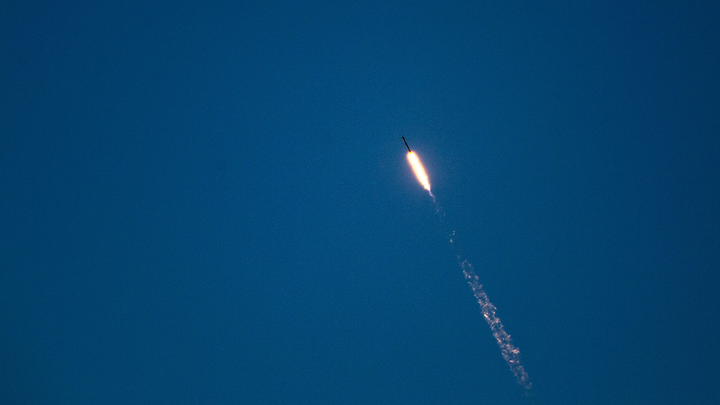WATCH LIVE: NASA astronauts conduct spacewalk to install new ISS solar arrays
WATCH LIVE: NASA astronauts conduct spacewalk to install new ISS solar arrays.
NASA is partnering with the Defense Advanced Research Projects Agency, or DARPA, to use a nuclear thermal rocket engine in space, according to reports.
In a press release on Tuesday, NASA said the nuclear thermal rocket engine could one day be used for NASA crewed missions to Mars.

Artist concept of Demonstration for Rocket to Agile Cislunar Operations (DRACO) spacecraft, which will demonstrate a nuclear thermal rocket engine. Nuclear thermal propulsion technology could be used for future NASA crewed missions to Mars. (DARPA and NASA)
Both agencies will collaborate on the Demonstration Rocket for Agile Cislunar Operations, or DRACO, program, under a "non-reimbursable agreement."
NASA'S ARTEMIS I LAUNCH TO BRING US STEP CLOSER TO ‘SUSTAINABLE HUMAN FOOTPRINT ON THE MOON’
The agreement, the release read, is designed to benefit both agencies while outlining roles, responsibilities and processes that could accelerate the program's development.
"NASA will work with our long-term partner, DARPA, to develop and demonstrate advanced nuclear thermal propulsion technology as soon as 2027," NASA Administrator Bill Nelson said. "With the help of this new technology, astronauts could journey to and from deep space faster than ever – a major capability to prepare for crewed missions to Mars. Congratulations to both NASA and DARPA on this exciting investment, as we ignite the future, together."
The nuclear thermal rocket would allow transit between the moon and Mars to take less time while also reducing the risk for astronauts.

NASA Administrator Bill Nelson speaks during a visit to the National Aeronautics and Space Administration (NASA) Goddard Space Flight Center on November 5, 2021 in Greenbelt, Maryland. ((Photo by OLIVIER DOULIERY/AFP via Getty Images))
Longer trips require more supplies, so reducing the transit time would be a key component for human missions to Mars.
NASA INSIGHT LANDER RECORDS LARGEST QUAKE ON MARS EVER, SCIENTISTS SAY
Additional benefits include increased science payload capacity and higher power generation for instruments and communications.
Nuclear thermal rocket engines have a fission reactor that generates extremely high temperatures. NASA said the engine transfers that heat to a liquid propellant which is exhausted through a nozzle that propels the spacecraft.
These types of engines, NASA added, can be three times more efficient than chemical propulsion engines.

NASA’s Perseverance Mars rover used its dual-camera Mastcam-Z imager to capture this image of "Santa Cruz," a hill within Jezero Crater, on April 29, 2021, the 68th Martian day, or sol, of the mission. (Credits: NASA/JPL-Caltech/ASU/MSSS)
"NASA has a long history of collaborating with DARPA on projects that enable our respective missions, such as in-space servicing," NASA Deputy Administrator Pam Melroy said. "Expanding our partnership to nuclear propulsion will help drive forward NASA's goal to send humans to Mars."
NASA'S MARS LANDER INSIGHT TRANSMITS POTENTIAL FINAL IMAGE OF THE RED PLANET AS ITS POWER DWINDLES
As part of the agreement, NASA will lead the technical development of the nuclear thermal engine while DARP will function as the contracting authority for the stage and engine, including the reactor.
DARPA will also lead the overall program, including rocket system integration, procurement, approvals, security, scheduling, and more.
The goal is to be able to demonstrate the rocket in space as early as 2027.
"DARPA and NASA have a long history of fruitful collaboration in advancing technologies for our respective goals, from the Saturn V rocket that took humans to the Moon for the first time to robotic servicing and refueling of satellites," Dr. Stefanie Tompkins, director, DARPA said. "The space domain is critical to modern commerce, scientific discovery, and national security. The ability to accomplish leap-ahead advances in space technology through the DRACO nuclear thermal rocket program will be essential for more efficiently and quickly transporting material to the Moon and eventually, people to Mars."
CLICK HERE TO GET THE FOX NEWS APP
NASA said the last nuclear thermal rocket engine tests conducted by the U.S. took place more than 50 years ago under NASA’s Nuclear Engine for Rocket Vehicle Application and Rover projects.











































